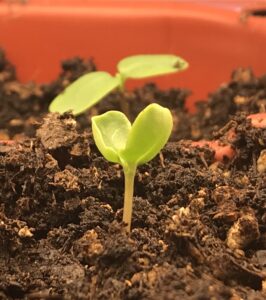

It may not seem like your plants are doing much, but they are. Give your plantings extra tender-loving care for one to two years after getting them in the ground.Īfter you have completed all five steps, be patient. Thereafter, water weekly until established. For three to 12 weeks after planting, water every two to three days.

For one to two weeks after planting, water daily. Don’t sabotage your garden’s success by neglecting this important point. Water consistently. Getting a new tree or shrub into the ground does not signal the end of the job! New plantings require more frequent watering than established trees and shrubs.Don’t be afraid to use a knife if you need to cut through a larger root system. To help them find their way out of that pattern, make a few vertical cuts around the root ball and gently splay the roots away from the center. Loosen the roots. Containers confine plant roots to such a degree that the roots begin to grow in a circle.The idea is to improve, not replace, the existing soil. If so, keep it to a minimum (less than 20 percent) and be sure to mix the compost thoroughly with the existing garden soil. If your soil is compacted you may choose to add organic matter, such as compost, to aerate it. Use the soil you dug to make the hole to fill in around the root ball. The depth of the hole need only be as deep as the current root ball. Give them plenty of room by digging a hole three times the width of the root ball with the sides of the hole sloping toward the bottom. Most new roots will grow horizontally from the side of the root ball. They require smaller holes be dug, are less expensive, and it’s fun to watch them grow. Smaller-sized plants adjust to transplanting better than larger ones. Test the soil. For best long-term results, test the soil in the area where you intend to plant and follow the advice in the Soil Report you receive.Follow these five “best practices” to give your new trees and shrubs the best start possible. The timing enables roots to grow into the surrounding soil before stress due to new foliage growth and high temperatures occurs. Spring is a great time of year to plant trees and shrubs. By state law, seedlings purchased from state forest nurseries must be used to establish or reforest wood lots, windbreaks and shelterbelts or used for erosion control, soil and water conservation or permanent food and cover for wildlife.The following information is from the University of Minnesota Extension and can be found by clicking here. The price varies from $90 per 500 trees to $175 per 500 trees, depending on the species ordered.

"Not all available species will be stocked at both nurseries."Ī minimum order of 500 trees is required. "Customers should call one of the nurseries before ordering to check out the tree species still available and from which nursery," said Vansickle. Over-the-counter sales will be offered until all seedling supplies are exhausted. People have to go to one of the two state forest nurseries to place a seedling order, which they can take home the same day. If ordered before May 10, the seedlings can be shipped by common carrier at a charge of $23 per thousand seedlings, or portion thereof, or picked up at the nearest state forest nursery.Īfter May 10, remaining supplies of tree seedlings can be obtained through over-the-counter sales.

"Red pine, jack pine, white spruce, balsam fir, black spruce, tamarack, white cedar, silver maple, black walnut, bur oak, red oak, mixed oak and some shrub species can still be ordered from General Andrews and Badoura nurseries," said Craig Vansickle, a DNR nursery supervisor. Tree seedlings in a limited number of species are still available from state forest nurseries, according to the Minnesota Department of Natural Resources (DNR).


 0 kommentar(er)
0 kommentar(er)
